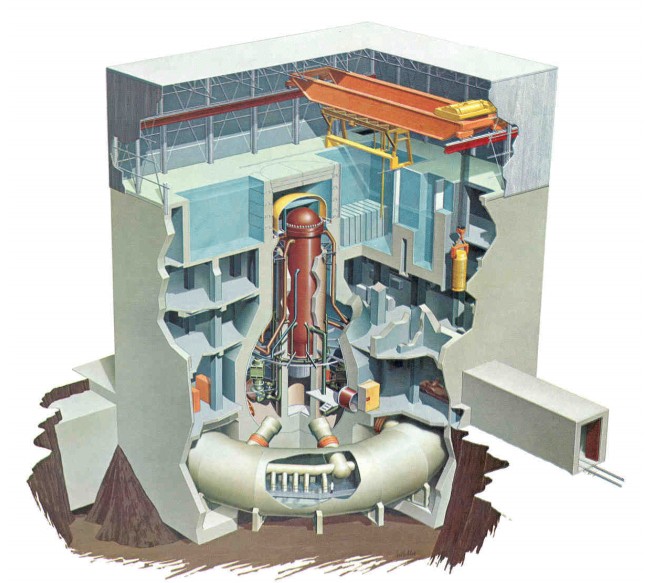The torus suppression chamber of Fukushima Daiichi 2 appears to be intact, ending speculation that it ruptured during the height of the accident sequence.
In common with its sister units 1 and 3, Fukushima Daiichi 2 suffered a core melt during the station black-out that followed the tsunami of 11 March 2011. The overheating of nuclear fuel produces hydrogen which at units 1 and 3 exploded and destroyed roofs of the reactor buildings. For unit 2 the theory has long been that an equivalent explosion took place in the torus suppression chamber, due to 'loud sounds' that came on 15 March 2011.
 |
_250x94.jpg) |
| Top: The torus suppression chamber is the circular structure in the basement of the reactor building. Bottom: Images returned by robot inspection indicate it is intact |
Now, Tokyo Electric Power Company (Tepco) is reassessing that idea after sending in a robot to bring back images of the torus. The pictures reveal superficial surface damage to pipework but show the outer surface of the torus to be in normal condition and the potential break points of the manhole covers intact. The robot spent over two hours performing almost a full circuit of the catwalk above the torus, where radiation dose rates varied from 30 millisieverts per hour to a maximum of 118 millisieverts per hour.
Concerns about unit 2's torus began on 15 March, when the 'loud sounds' were confirmed by regulators as coming from the building. At the same time radiation readings at the site boundary saw a peak and pressure in the torus reduced quickly. These signs are consistent with the idea that the torus had ruptured, releasing non-condensed radioactive gases that quickly dispersed.
However, other major events on site also occurred in the same time period: Hydrogen and other gases that had been vented from unit 3 had travelled the wrong way through a shared check valve to accumulate in unit 4. This subsequently exploded, severely damaging unit 4 and starting recurrent fires.
Researched and written
by World Nuclear News




_47120.jpg)

_23621.jpg)






